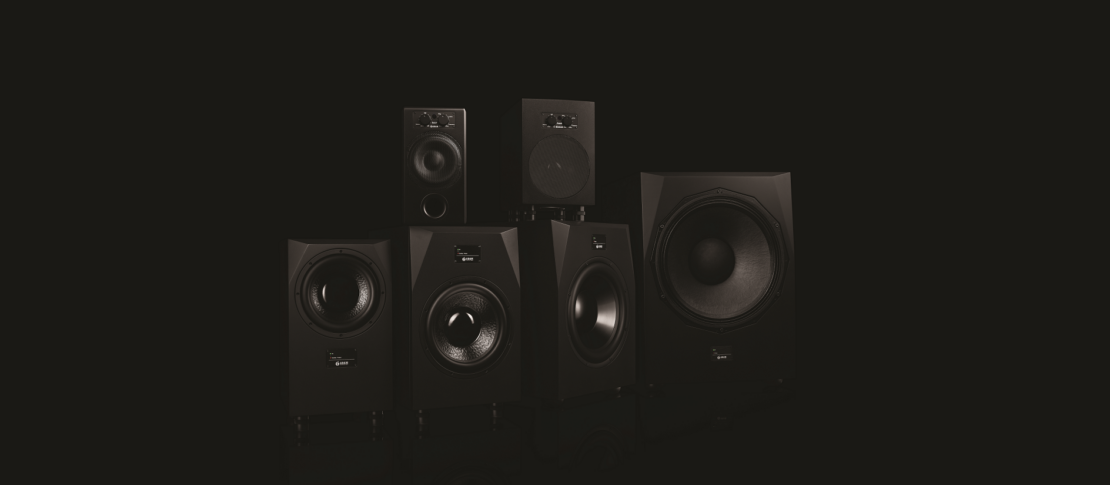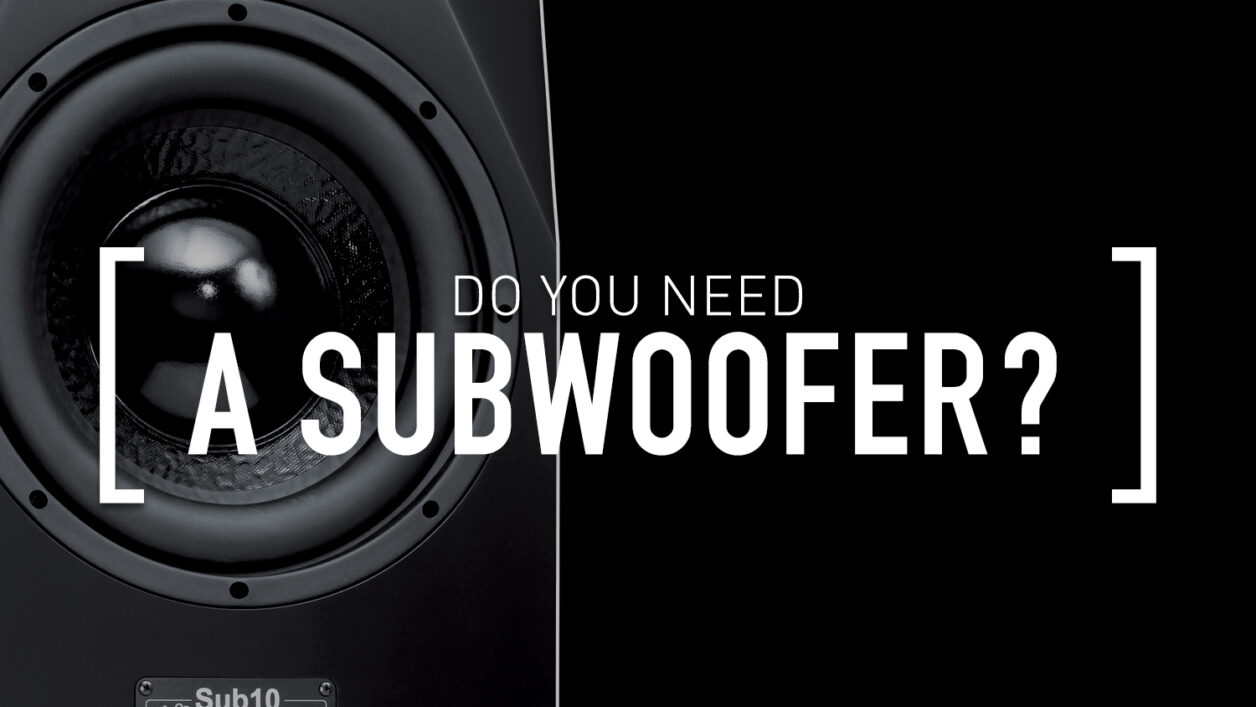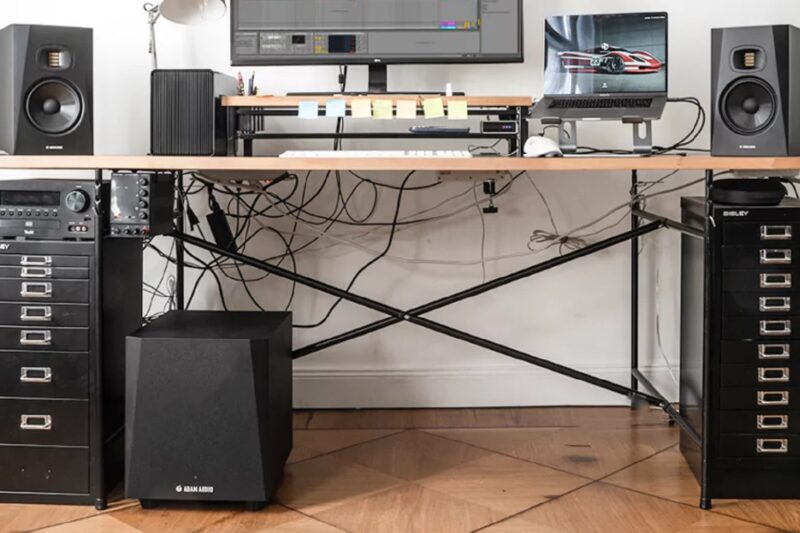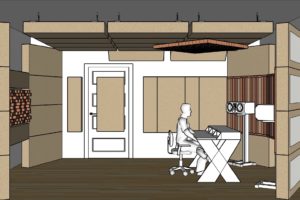
Do I need a subwoofer for my home studio?
If you’re asking yourself whether you need a subwoofer for your studio, you’ve come to the right place. In this educational article, we’re going to shed some light on what to consider when thinking of adding a subwoofer to your home studio, how to calibrate it with your existing system correctly, and what you can do if your studio space isn’t ideal for a 2.1 system. Let’s get started.
Lower Bass, Not Louder Bass
First things first, let’s address the real reason why you would need a subwoofer for your studio: it’s all about lower bass, not louder bass. Subs are often mistakenly added to systems to hype up the low end. This is incorrect. The actual purpose of a subwoofer is to reveal the lower spectrum of frequencies so that you can make educated mixing and EQ decisions. Pairing your monitors with a subwoofer is commonly known as a “2.1 system” (which is technically not a 100 % correct, but let’s not get hung up on this now).
Many instruments and sounds go lower than a typical two-way nearfield monitor can register, for example, an electric bass, a grand piano, or larger drums. In addition to their fundamental frequency, these instruments have upper harmonics that can give you a sense of the instrument’s sound even if the full range of the instrument is cut off by the low range of the monitor.
The way in which music and sound have evolved has dramatically increased the need for subwoofers in home studios. While you may still hear the harmonics of natural instruments or their samples, the tables are turned when using synthetic instruments and effects that don’t have harmonics. A lot of electronic sounds are only represented by their fundamental frequency, which means if that frequency is below the cut-off of your monitors, it won’t be heard at all and could take up headroom in your mix. If your speakers can’t reproduce the entirety of the spectrum of your signal, you have no chance of knowing what’s happening in the lower registers. That’s where a subwoofer comes in.
There’s a common misconception that 2.1 systems are very expensive and almost a luxury to have, but this is not always the case. Our most affordable package 2.1 system consists of two ADAM Audio T5V nearfield monitors and an ADAM Audio T10S subwoofer from our T Series. This complete package comes in at around the €750/$800 mark.
If you have your eyes on a 2.1 system, learn more about what to consider before spending your money with our handy “Studio Subwoofer Basics” video – shown below. This video is a great source of information, and it will also give you a chance to find out more about our T5V nearfield monitors and T10S subwoofer 2.1 system.

By loading the video, you agree to YouTube's privacy policy.
Learn more
How to Calibrate a Subwoofer
As with any aspect of sound calibration, settings can be changed to personal taste and specific use-cases. The following guidelines are just to give you a basic overview and foundational knowledge of subwoofer calibration.
Let’s begin with the ideal placement and position of your monitors and subwoofer. To get a linear phase response, align the transducers vertically. Around the crossover point, signals can be reproduced by both the sub and your monitors, so aligning them properly is crucial. If you move the sub forwards or backward from this position, you will delay the signal being produced and this could cause phase cancellation.
The most common way of driving a 2.1 system is to route the stereo signal coming from your audio source through the subwoofer and daisy chain the studio monitors. In order to match the subwoofer to your studio monitors, you need to control the subwoofer level, the crossover frequency, and the phase. With the level pod, you can match the volume of the subwoofer to the level of the studio monitors.
The crossover frequency switch at the back of the subwoofer defines the upper cut-off frequency of the subwoofer output and the lower cut-off frequency of a high-pass filter, which is applied to the signal for the daisy chain satellites. With this switch, you can decide which part of the low-frequency information is handled by the sub or the studio monitors.
As we mentioned earlier, improper alignment of your subwoofer and monitors can cause phase cancellation, but we realize that perfect placement is not always possible in certain home studio setups. Luckily, there are ways to get around this. You can use the onboard bass management at the back of your subwoofer to counter any problems you might have. The phase switch, which is also found at the back of your subwoofer, can be useful when repositioning the subwoofer in your room, as you can use it to make sure that the subwoofer and the studio monitor output arrives in phase at your listening position.
If you need in-depth info on calibrating your subwoofer or repositioning your subwoofer, check out our “How To Calibrate a Subwoofer” walk-through video. This video gives you a detailed step-by-step guide to calibrating the ADAM Audio Sub15 to the (now discontinued) ADAM Audio A77X. Even if you don’t own this system setup, you will discover valuable knowledge regarding subwoofer calibration. You can also find a number of calibration files for our product packages in the video description.

Conclusion
Setting up a subwoofer with studio monitors is a subject far too complicated to sum up in one short article, but we hope we’ve given you a good insight into where to begin. If you didn’t find the specific information you needed in this article or the included videos, you can find a wealth of related expert knowledge via our YouTube channel and blog .
Remember: Subwoofers aren’t essential to a home studio setup, but if you choose the right match for your speakers, you can significantly extend the range and quality of your monitoring system and mixes.
